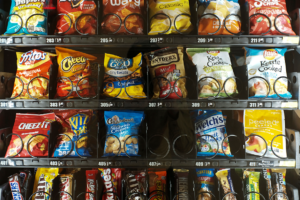
UPDATE: Uber, Lyft, and DoorDash have just announced a significant shift in their strategies, underscoring the urgent need for massive investments in autonomous technology. During their latest earnings reports, released on October 25, 2023, the companies revealed that scaling up self-driving cars and delivery robots will require “several hundred million dollars” more than previously expected.
Self-driving vehicles are already navigating American streets, but companies emphasize that widespread implementation hinges on hefty financial commitments. DoorDash’s CEO Tony Xu stated, “This is not something that’s going to happen overnight,” highlighting the critical need for upfront investments to advance their autonomous delivery initiatives.
DoorDash is preparing to spend between $500 million to $600 million on its delivery robot, Dot, which has been operational since earlier this year. The robot is designed to autonomously traverse bike lanes and sidewalks, enhancing delivery efficiency. However, following the announcement, DoorDash’s stock plummeted by 17%—the largest single-day drop in its history.
Lyft is also feeling the pressure. With a partnership with Waymo, the ride-hailing giant plans to invest between $10 million and $15 million in a new depot in Nashville, which will service and store self-driving vehicles. CFO Erin Brewer emphasized that building this infrastructure is essential for the company’s future profitability, stating, “You’ve got to invest in some physical infrastructure.”
Meanwhile, Uber CEO Dara Khosrowshahi reiterated the need for substantial investments in self-driving technology, acknowledging that the current model is a “money-losing venture.” However, he expressed confidence in the long-term potential, noting that Uber’s past strategies have balanced growth with profitability. “We can turn those products profitable if we want it tomorrow, but it’s about the balance of investing in profitability and growth,” he said.
The urgency for these investments reflects a rapidly changing landscape in the gig economy, as consumers increasingly expect innovative solutions from ride-sharing and food delivery services. Companies are under pressure to deliver on promises of autonomous vehicles, which could transform urban mobility and delivery services.
As the competition intensifies, all eyes are on how these major players will navigate the challenges of investment and technology development. What remains clear is that the race to make self-driving cars and delivery robots commonplace is heating up, and the stakes have never been higher.
Next Steps: Investors and consumers alike should watch closely for further developments from Uber, Lyft, and DoorDash as they strive to make autonomous technology a reality in the coming years. The financial implications of these investments will likely shape not only the companies’ futures but also the broader landscape of transportation and delivery.






